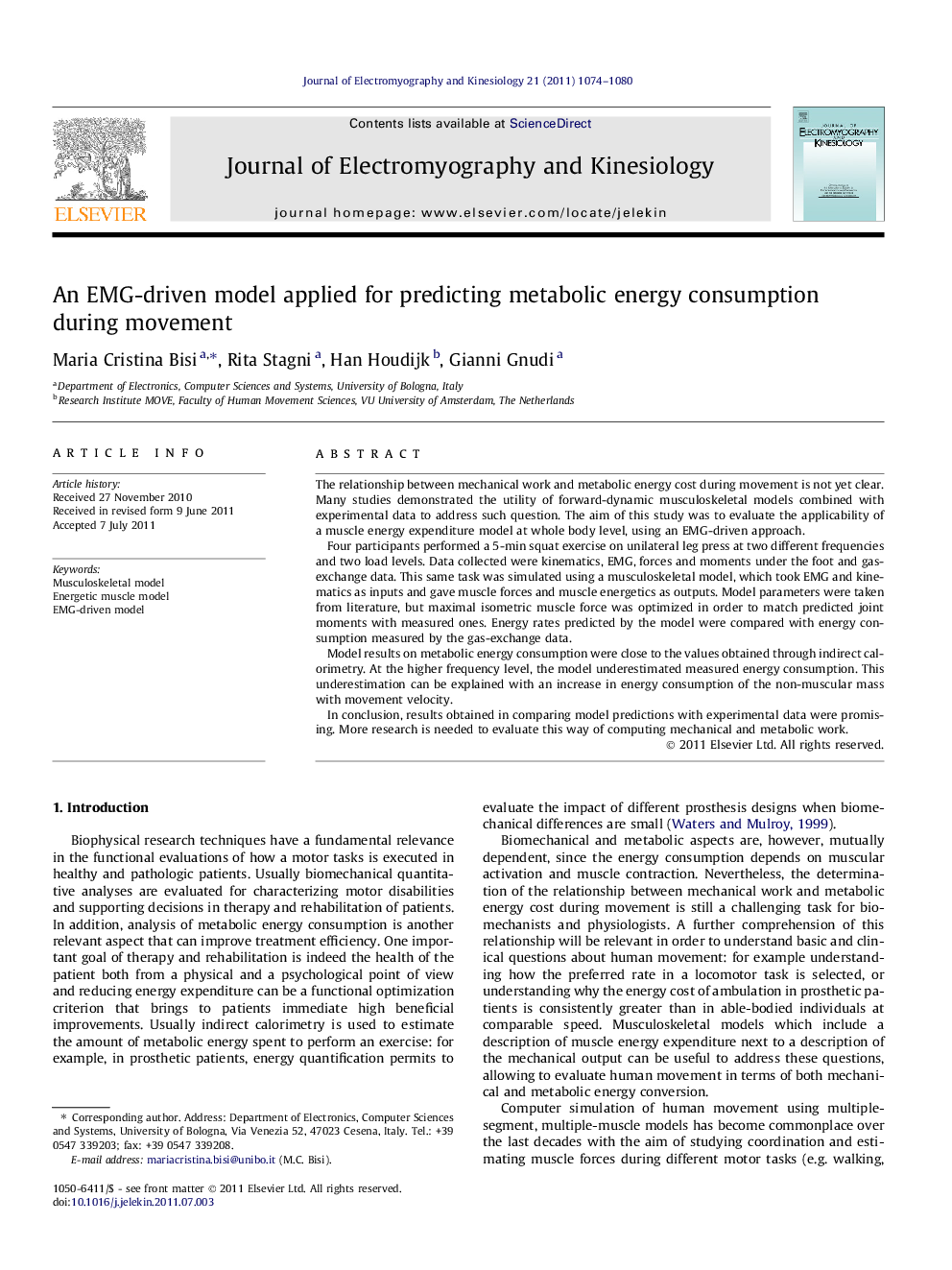| Article ID | Journal | Published Year | Pages | File Type |
|---|---|---|---|---|
| 4064755 | Journal of Electromyography and Kinesiology | 2011 | 7 Pages |
The relationship between mechanical work and metabolic energy cost during movement is not yet clear. Many studies demonstrated the utility of forward-dynamic musculoskeletal models combined with experimental data to address such question. The aim of this study was to evaluate the applicability of a muscle energy expenditure model at whole body level, using an EMG-driven approach.Four participants performed a 5-min squat exercise on unilateral leg press at two different frequencies and two load levels. Data collected were kinematics, EMG, forces and moments under the foot and gas-exchange data. This same task was simulated using a musculoskeletal model, which took EMG and kinematics as inputs and gave muscle forces and muscle energetics as outputs. Model parameters were taken from literature, but maximal isometric muscle force was optimized in order to match predicted joint moments with measured ones. Energy rates predicted by the model were compared with energy consumption measured by the gas-exchange data.Model results on metabolic energy consumption were close to the values obtained through indirect calorimetry. At the higher frequency level, the model underestimated measured energy consumption. This underestimation can be explained with an increase in energy consumption of the non-muscular mass with movement velocity.In conclusion, results obtained in comparing model predictions with experimental data were promising. More research is needed to evaluate this way of computing mechanical and metabolic work.
